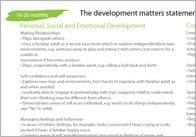How to Motivate Pupils to Learn at the KS1 Level

Just like motivated adults in the workplace, motivated children in the classroom achieve better results. A motivated pupil will be more likely to push themselves and take on new learning challenges without being prompted, they will demonstrate concentration and effort in everything they do and they will be more likely to stick with a task until the very end. Motivated pupils also have a positive outlook on education and are a teacher’s dream because their enthusiasm tends to rub off onto the other pupils.
So how do you, as a teacher, encourage a high level of motivation in your classroom? Luckily, motivating students can start from a very young age – right from Key Stage Level 1. This article will outline several ways teachers can get the very best from their pupils.
Set Expectations and Goals
As every parent knows, children don’t miss a beat, and they are keenly aware of how their parents and other adults see them. Because of their natural desire to fit in, many children will tailor their behaviour to fit in with the adult’s perception of them. That is why, as a teacher, it is important that from very early on you make your expectations of your pupils crystal clear.
At KS1 level, you may wish to write a list of ‘commandments’ or rules that your pupils must apply to their everyday classroom activities, such as ‘I will always try my best’ or ‘ I will be silent when the teacher is talking’ and so on. Seeing a visual cue on a notice board will remind the pupils of the expectations placed upon them, allowing them to effectively police themselves without you having to constantly remind them.
Setting up individual goals for each child will also help them establish their own sense of motivation with classwork. Talk to the child openly and honestly about what they would like to be able to achieve within a set amount of time and break the target down into manageable, smaller goals.
For example, if they need to learn all of their times-tables, set a goal to learn their 10-, 2- and 5-times tables first and then move onto more complex stuff like their 3-times tables. That way, when the child recognises that they have reached a smaller milestone along the way, they will be more encouraged to carry on until they reach their ultimate goal.
Encourage Resilience
Neuropsychologist, Sam Goldstein, Ph.D. firmly believes that encouraging resilience in children is vitally important and will set them up for life when it comes to dealing with setbacks, solving their own problems and recognising their personal strengths. As a teacher, you can encourage resilient qualities in your pupils by demonstrating empathy on a one-on-one level.
For example, if one of your pupils comes to you struggling with a piece of work, showing them that you can see their point of view will make them more susceptible to your advice. For example, if you say something along the lines of, ‘Yes I can understand why you are finding this difficult, is there a different way you can approach this task?’ will show the child that it’s okay that they don’t know how to do something yet, and that they should keep on trying until they get it right.
Another method of encouraging resilience is to not immediately offer up answers to every little problem. Give them choices and develop activities that have a number of different solutions, so pupils really get a sense that experimentation and exploration of all the different avenues will ultimately enable them to come to the right answer by themselves.
Support Their Learning Style
Pupils will be more willing to learn if the information is presented in a learning style that feels most natural to them. There are three main types of learner – auditory, kinaesthetic and visual – and although it is possible to learn new information in all three ways, most people will have a dominant learning style that they will tend to lean towards and enjoy the most.
Auditory learners love to hear stories and music so tend to take oral instruction well. Auditory learners are also good communicators, so will thrive in classroom discussions. An auditory learner may prefer spelling a word out-loud to a teacher rather than sitting a written spelling test.
Visual learners feel motivated when they get to see pictures and create artwork that supplements written assignments. Encouraging them to take notes in different colours and create diagrams that explain concepts will stimulate their memory effectively.
Kinaesthetic learners are practical and enjoy demonstrating ability rather than theoretical study. Motivate these learners by allowing them to use objects like counters during maths lessons, encourage modelling and sculpture in any way you can and for things like reading comprehension in English lessons, having them devise scenes of theatre themselves will really help the lesson sink in.
As a teacher, presenting lessons in new and exciting ways will ensure that you pique your pupil’s interests often. Here are guides to teaching Maths and English using varied and innovative methods.
Encouragement and Rewards
It’s a no-brainer that praising and rewarding achievement and good behaviour will increase the likelihood of the pupil repeating these efforts and behaviour in the future. In the earlier example of breaking times-tables down into smaller chunks, offering a reward such as a sticker at each stage provides tangible evidence of their achievement that is often more meaningful to Key Stage 1 pupils than simply the knowledge they’ve learn something!
However, encouragement is a slightly different concept that is still equally important in the classroom environment.
Questions that encourage the pupil to make a self-assessment of their work such as, ‘how long did you spend colouring that? Or ‘How did you get the model to stand up like that?’ work as powerful motivating statements. The child gets a chance to recognise their own achievements rather than relying on the teacher to give them praise, and this will in turn foster a sense of independence and pride as the pupil realises that they can do more and more for themselves.
In conclusion, motivation is the key to pupil achievement at any age but at KS1 especially a teacher must learn to get creative and try out different teaching methods. Pupils at this age are still learning themselves which methods work best for them, so give them an opportunity to try everything out and speak with you about what they prefer and why.
If you have any further comment on this subject, please leave me a comment below.
Jessie is an enthusiastic and active private tutor specialising in teaching children Maths, English and Chinese. She has a particular interest in making teaching and learning more fun and effective.
Popular Teaching Resources
Stay Up To Date
Sign up for our newsletter and we’ll let you know when we create new early years resources.





